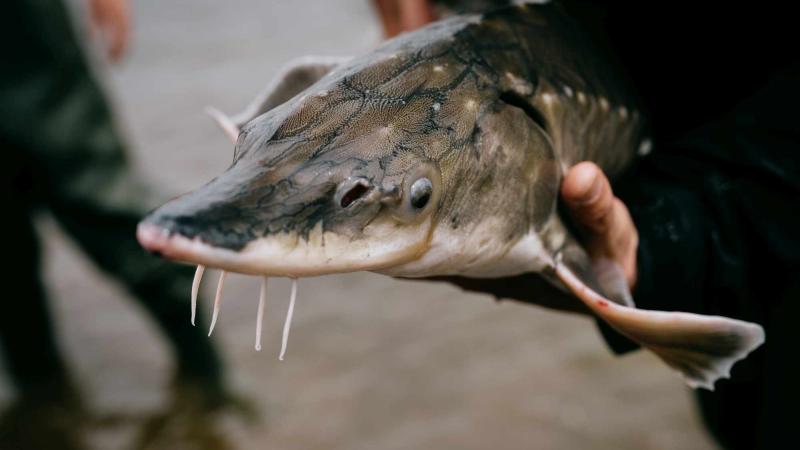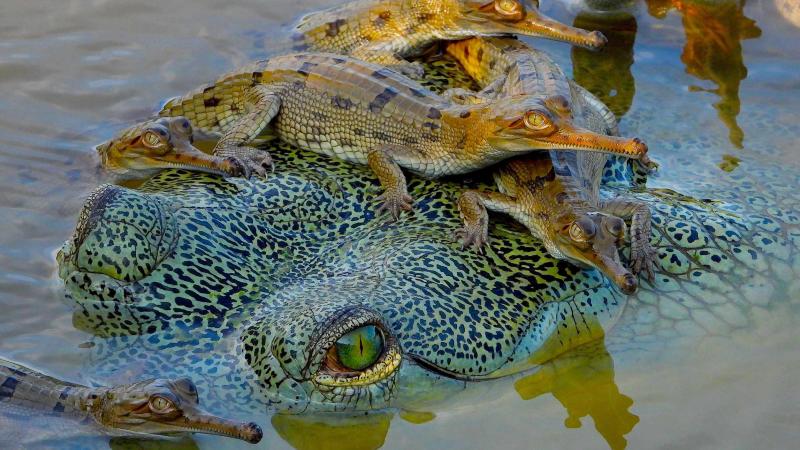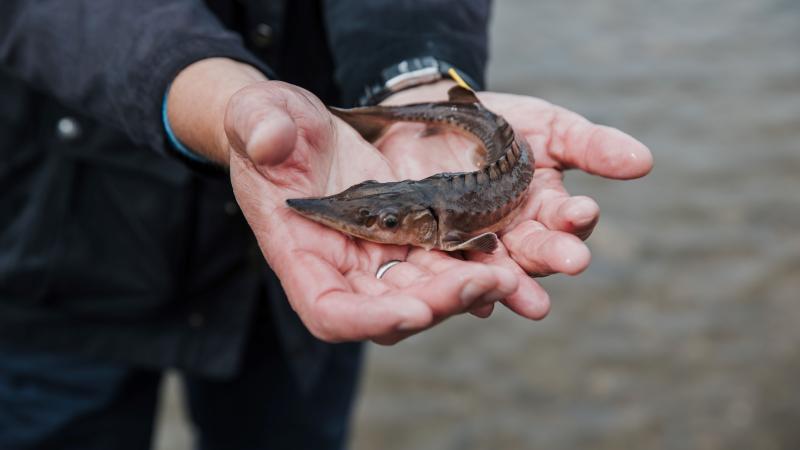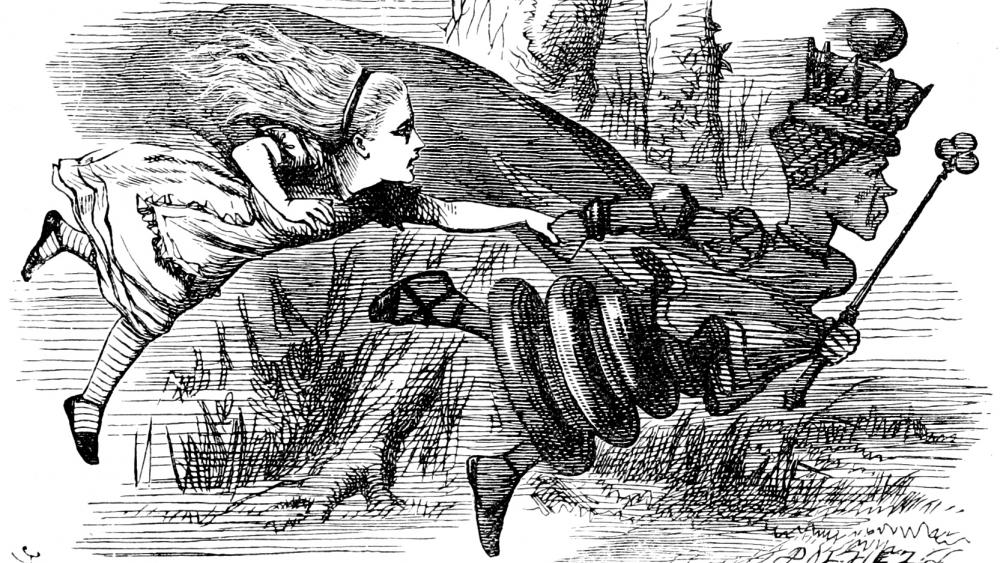
Parasite and host organisms must constantly evolve to adapt. This race against each other is also described as Red Queen hypothesis, based on Lewis Carroll's book "Through the Looking-Glass". | Bild: Wikimedia Commons
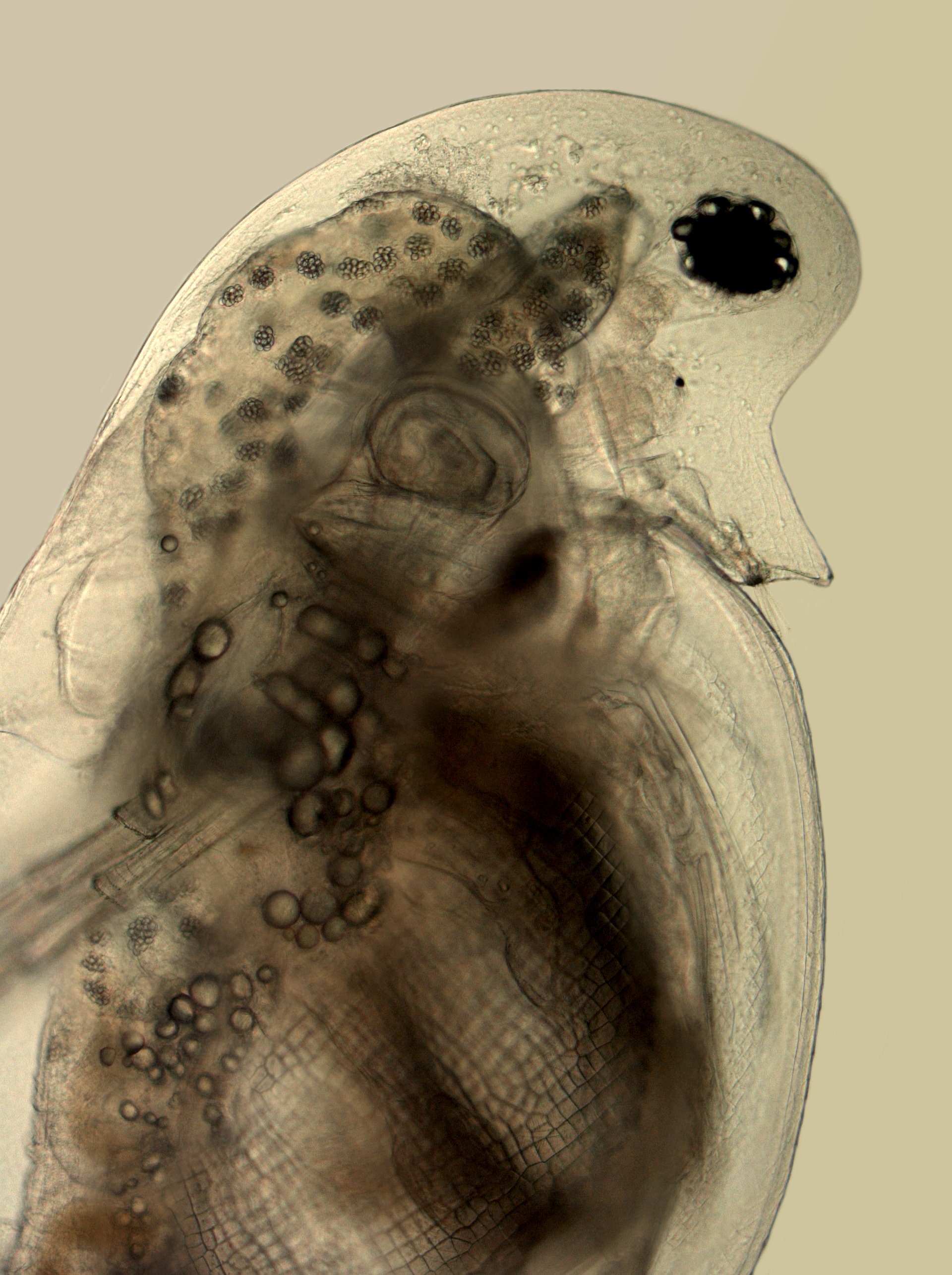
The host-parasite system of the long-term study: a Daphnia infected with the protozoan gut parasite Caullerya mesnili. | Photo: Petr Jan Juracka
Long-term studies on parasite-host interactions in natural populations are still limited, mainly because of their difficulty and high expense. Evolutionary biologists led by IGB scientist Justyna Wolinska have now analysed changes in the genetic material of a Daphnia population over a 13-year period. The researchers found that the population of water fleas (Daphnia longispina) is undergoing stronger changes in periods with higher parasite infection. However, outside of epidemics, genotype turnover in the Daphnia population is slowed down. The results support the hypothesis of the Red Queen – a continuous evolutionary race – and show the role of parasites for the maintenance of the genetic diversity of host organisms.
Read the study in the Online-Journal Evolution >
Patrick Turko, Christoph Tellenbach, Esther Keller, Nadine Tardent, Barbara Keller, Piet Spaak, Justyna Wolinska (2018) Parasites driving host diversity: Incidence of disease correlated with Daphnia clonal turnover. Evolution. doi: 10.1111/evo.13413



